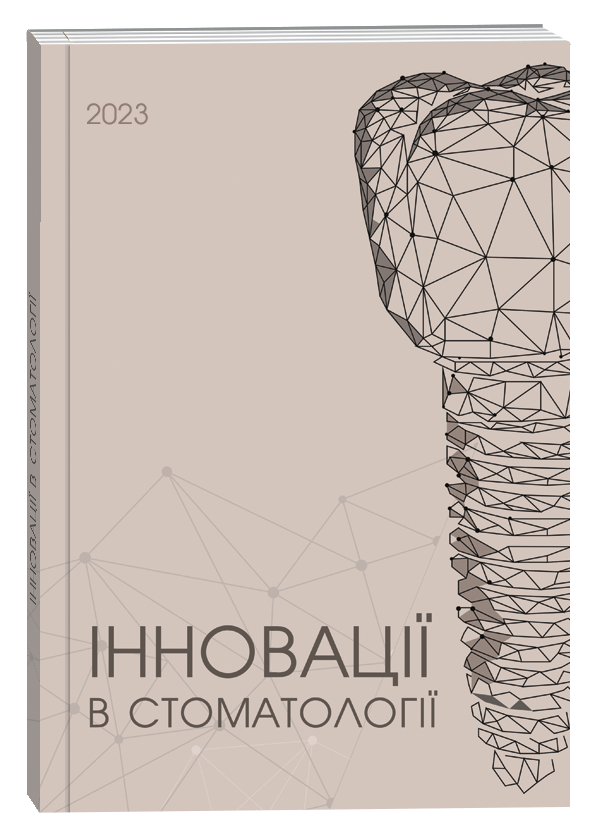ASSESSMENT OF THE EFFECT OF A THERAPEUTIC DRUG COMPLEX ON SERUM BIOMARKERS IN EXPERIMENTAL ANIMALS FOLLOWING DENTAL IMPLANT PLACEMENT
DOI:
https://doi.org/10.35220/2523-420X/2025.2.4Keywords:
implants, blood serum, rats, experiment, biochemical markersAbstract
Surgical insertion of dental implants is accompanied by local inflammation and oxidative stress, which can hinder subsequent osseointegration. Correction of these alterations using combined anti-inflammatory and antioxidant agents is a current challenge in modern implantology. The purpose of the study was to evaluate the effect of a newly developed therapeutic-prophylactic complex (TPC) on serum biochemical markers in experimental rats after dental implant placement. Materials and methods. Thirty outbred male white rats (4 months old, 220–250 g) were divided into three groups (n = 10): intact; control (implantation + drinking water per os); experimental (implantation + TPC per os for 30 days). Sixty days postsurgery, serum elastase activity, malondialdehyde (MDA) concentration, catalase activity, and the antioxidant– pro-oxidant index (API) were determined. Statistical analysis employed Student’s t-test (p < 0.01). Research results. In control animals, implantation increased elastase activity by 28.0% and MDA by 61.9%, while catalase activity decreased by 56.3% and API fell 2.5- fold compared with the intact group. TPC administration reduced elastase by 14.7% (p < 0.05) and MDA by 27.9% (p < 0.02) versus control, simultaneously restoring catalase activity (+43.7%; p < 0.002) and doubling API (p < 0.001), bringing these parameters close to intact values. Conclusions. The developed therapeutic-prophylactic complex exhibits pronounced anti-inflammatory and antioxidant effects in the context of dental implantation: it normalises elastase activity, decreases lipid peroxidation intensity, and restores antioxidant system function. These findings confirm the promise of the TPC for preventing oxidative-inflammatory complications and enhancing implant osseointegration success.
References
Sycińska-Dziarnowska M., Szyszka-Sommerfeld L., Ziąbka M., Woźniak K., Spagnuolo G. Propolis in dental implantology: a systematic review of its effects and benefits. J Funct Biomater. 2024. №15(11). Р. 339. DOI: 10.3390/jfb15110339
Gasmi Benahmed A., Gasmi A., Tippairote T., Mujawdiya P.K., Avdeev O., Shanaida Y, et al. Metabolic conditions and peri-implantitis. Antibiotics (Basel). 2023. №12(1). Р. 65. DOI: 10.3390/antibiotics12010065
Buranasin P., Kominato H., Mizutani K., Mikami R., Saito N., Takeda K., et al. Influence of reactive oxygen species on wound healing and tissue regeneration in periodontal and peri-implant tissues in diabetic patients. Antioxidants (Basel). 2023. №12(9). Р. 1787. DOI: 10.3390/antiox12091787
Karasu Y.Ö., Maden O,. Çanakçı C.F. Oxidative damage biomarkers and antioxidant enzymes in saliva of patients with peri-implant diseases. Int J Implant Dent. 2024. №10. Р. 43. DOI: 10.1186/s40729-024-00562-x
Kasuma N. The relation of neutrophil elastase level with tissue destruction in gingivitis and periodontitis. Dentika Dental Journal. 2017. №20(2). Р. 66–71.
Iova G.M., Calniceanu H., Popa A., Szuhanek C.A., Marcu O., Ciavoi G., et al. The antioxidant effect of curcumin and rutin on oxidative stress biomarkers in experimentally induced periodontitis in hyperglycemic Wistar rats. Molecules. 2021. №26(5). Р. 1332. DOI: 10.3390/molecules26051332
European convention for the protection of vertebrale animals used for experimental and other scientific purposes. – Strasburg.Council of Europe, 1986. №123. 51 р.
Наказ України «Про затвердження Порядку проведення науковими установами дослідів, експериментів на тваринах». Міністерство освіти і науки України. 2012. № 249.
Левицький А.П. Антиоксидантно-прооксидантний індекс сироватки крові щурів з експериментальним стоматитом і його корекція зубними еліксирами. Одеський медичний журнал. 2006. №1(93). С. 22–25.
Рогач І.М., Керецман А.О., Сіткар А.Д. Правильно вибраний метод статистичного аналізу – шлях до якісної інтерпретації даних медичних досліджень. Науковий вісник Ужгородського університету. 2017. Вип. 2. С. 124–28.








